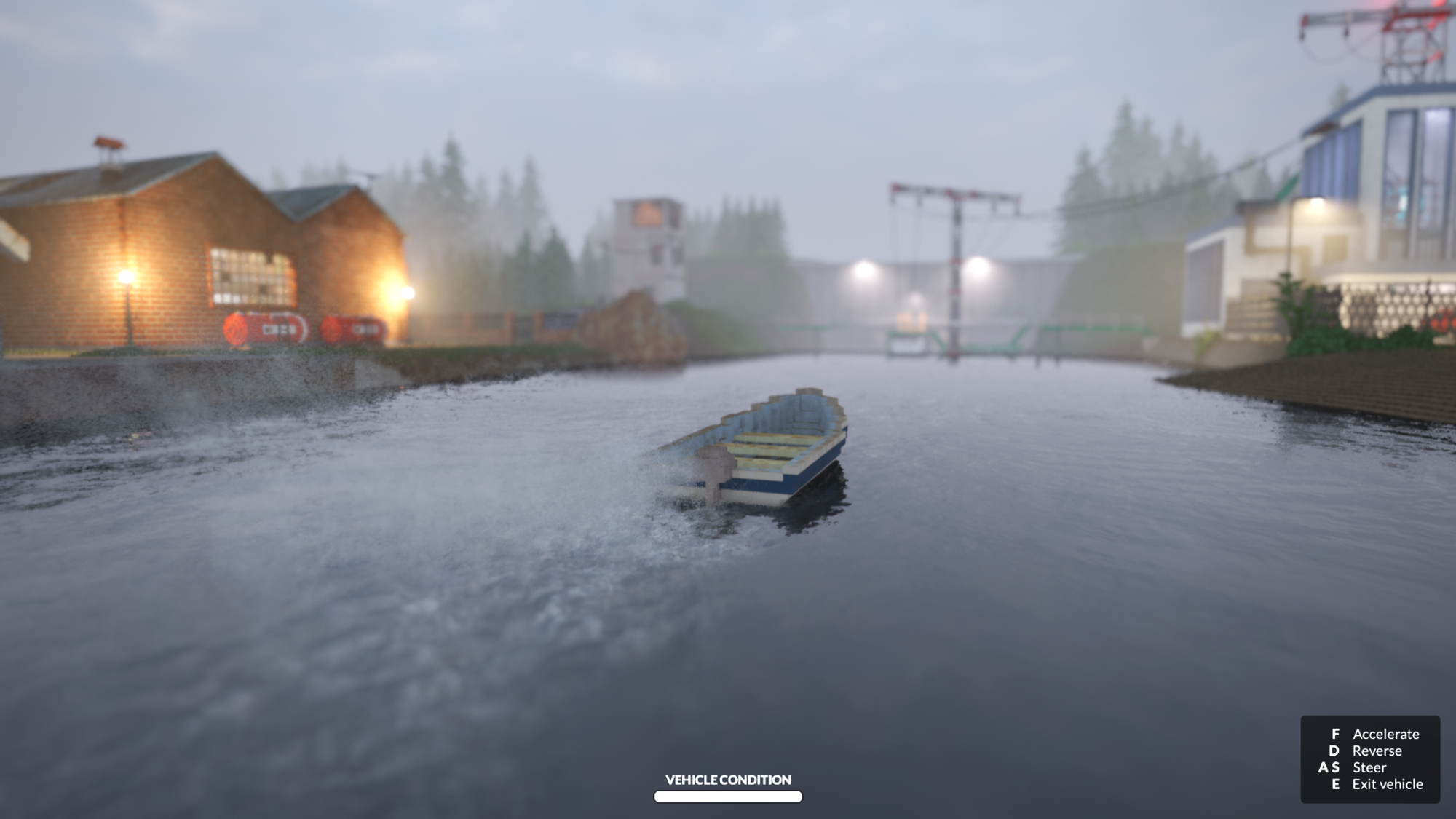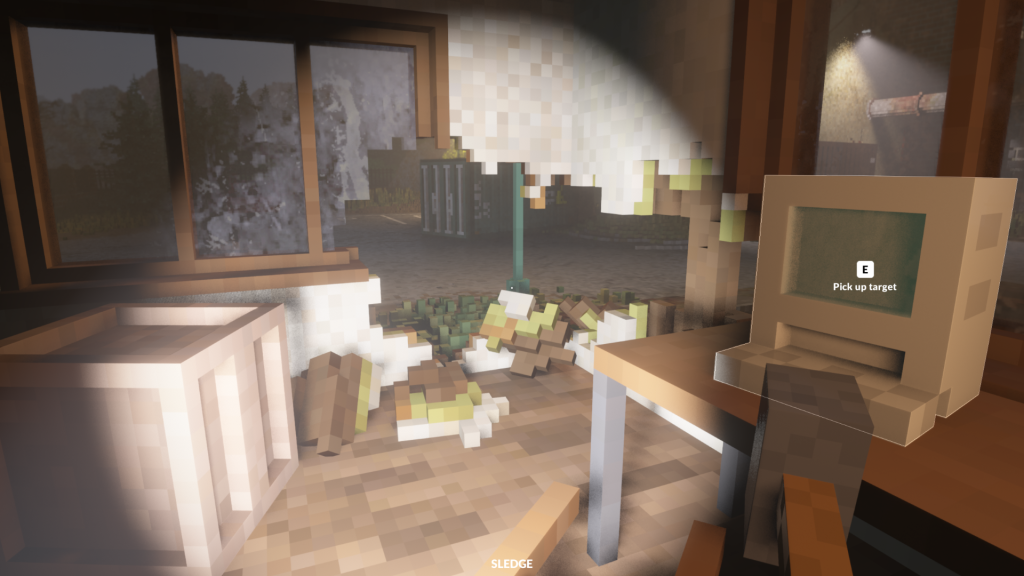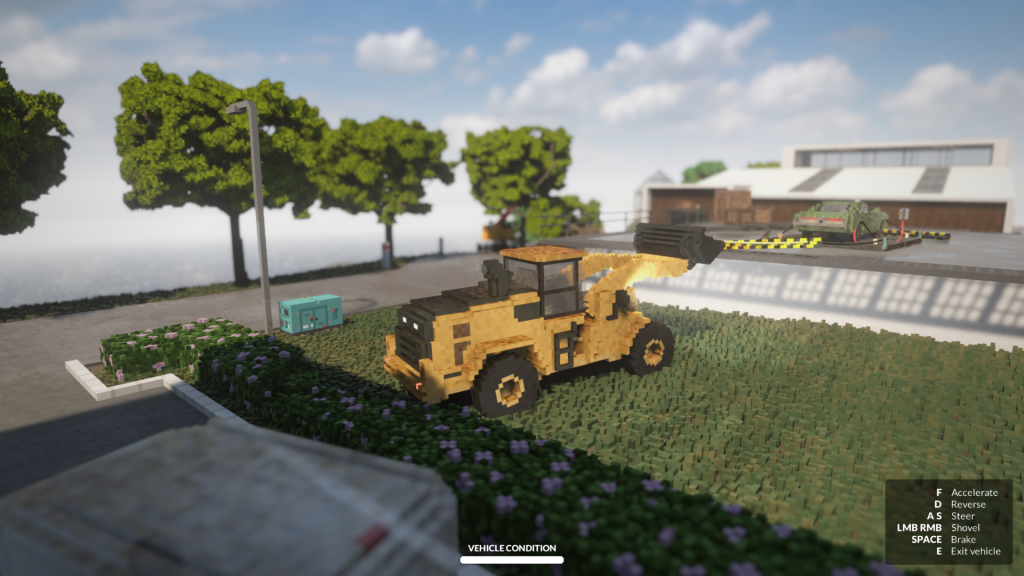
Ever since I learned about Awesome Games Done Quick several years ago, I’ve had an interest in speedrunning and the talent, community, and dedication that runners pour into the hobby. However, I know myself well enough to understand that I’ll probably never be able to personally invest the necessary time and energy to participate in it. But I do still have an itch for it, and I love to see games that speedrunning as inspiration for their own internal gameplay mechanics — in fact, it’s something I talked about on my GOTY list in 2019.
Teardown is another example of this idea, a game designed around destructible sandbox levels dotted with objectives that must be collected in a single sixty-second sequence. And while Teardown’s narrative is not particularly focal, its story of demolition, robbery, and all manner of very questionable business practices still delivers satisfying moments and some fun writing.
Setting up the Dominoes
In its tutorial levels, Teardown down establishes a few basic mechanics around demolition and the tools that are used to perform it. The whole game is driven by a voxel-based physics system that allows structures to be smashed, exploded, and rammed with vehicles to produce various paths into, over, and through the obstacles in each level.
Once the tools of destruction are introduced, subsequent missions involve more than simple demolition. A collection of valuable items within the level must be stolen, but there’s a catch: as soon as a single item is taken, an alarm is tripped and the player has a very short amount of time to grab everything they can and run.
These two mechanics — the smash and the grab, if you will — are the core building blocks of the rest of the game. Levels take on a two-phase approach: setup and execution.

The first phase is slow, methodical, deliberate, and resource constrained. The player only has a certain amount of charges and rounds for their various destructive weapons and tools. Players will place planks to bridge gaps between buildings, smash through brick walls to create openings, and even collapse floors or roofs to create quicker access to objects of value within. Every decision counts when it comes to building the perfect route through the level, and players may need to explore the environment to find extra tools to help clear a path. Sometimes explosive objects around the level can help; sometimes a vehicle can help smash down a brick wall without using precious ammunition; other times, a vehicle can be strategically placed to aid traversal across the level.
The second phase is where it all pays off, where the dominoes fall over. Teardown doesn’t go out of its way to create particularly precise platforming challenges when it comes to running through the level to collect all the loot, but it does make its vehicles fiddly and difficult to handle, rewarding players who line them up just right and bail out of careening vehicles to sprint between objectives. Broadly speaking, the actual execution of the movement is just tricky enough to invite skilled play, but not so elaborate or precise that it undercuts the importance of careful routing.
Most levels feature bonus objectives to amplify the challenge, and there are numerous side missions with different configurations and objectives that complicate and remix the formula. Some are interesting and some are unremarkable, but they always find new ways to reuse spaces and tend to place objectives in different hard-to-reach spots. To me, none of these side missions had quite the same appeal as the core smash and grab levels, but the variations do provide reasons to further explore the levels and find new details to exploit.
Breaking Shit is Fun
Teardown’s sublime mechanical structure is also scaffolded by a light-hearted crime drama told through the various job requests that the player character receives. Interspersed between emails from your doting mother, you’ll receive requests from wealthy CEOs picking petty fights with their competition, hiring you to break their competitors’ things and disrupt their plans (and then turning around and doing the same for said competitor). In the meantime, you’ll receive messages from a cop investigating these companies’ illegal business practices, who recruits you to do some under-the-table work to steal incriminating documents from locations that the police don’t actually have a warrant to search.
It’s a conceit that’s often a little corny and over-the-top, but it remains endearing nonetheless due to the sheer delight it takes in the hypocrisy, egoism, and incompetence of the powerful. Teardown may not be presenting any especially novel ideas in its escalating crime story, but it’s filled with an understanding of just how much rich people fucking suck, and how immensely satisfying it would be to smash their fancy toys and steal their beloved valuables and status symbols.

In one of my favorite levels in the game, a client asks you to mess with a competitor by breaking into his mansion and driving as many of his fancy sports cars into the ocean as possible before time runs out. This means that the routing involves an elaborate sequence of peel-outs, pitching half a dozen cars into the water and leaping out of the drivers seat while they careen off the road before hoofing it to the next one.
It’s ridiculous, bombastic, and committed to the catharsis of breaking a shitty person’s expensive toys. At the beginning of the game, the player character is on the verge of bankruptcy as their above-board demolition company ekes by through a patch of slow business. But after each level, players return to their home and workshop and find new expansions or improvements that the player character has been building in their downtime. Players also have an opportunity to upgrade the tools of their trade, gaining access to more charges and ammo or new tools entirely.
As its story progresses, Teardown includes one more staple of crime stories: a sense of hubris and an impending fall, which hangs over the story leading up to the final mission. How far will the player character go before they become the sort of villain they’ve been working for?
The final touch is the game’s excellent aesthetic, a pixelated art art style with realistic light and shadow, reminiscent of Minecraft with shader mods but featuring more grounded and detailed voxel representations of objects. The palette of the game has a dusty, muted feel to it, making the grays and browns of concrete and brick feel realistic despite the blockiness. The sound effects have all the crunching and crashing and exploding that you’d want.

Conclusion
Teardown is a game about planning and execution, a distillation of the things I love most about speedrunning. I love to see explanations of how particular tricks or exploits were discovered and honed, probably even more so than I like seeing the techniques executed by a skilled runner (which is also still very cool). And to be able to engage in a microcosm of that sort of dissection of a level is a really joyful thing that rarely comes up naturally. Even games with time trials and leaderboards tend to have more constrained possibility spaces Teardown, which is able to lean on its sandbox level structure and simulated destruction to create a lot of nuance and breadth to the routing decisions it presents.
And finally, it’s worth noting that Teardown is still being developed and expanded (including a big update released a couple weeks before this post), as well as highlighting the work of its player community by providing modding tools and showcasing a set of featured mods directly in the game. I’m excited to play the expansion and explore the mods, and I’m glad to see that the game’s community is making it even better.